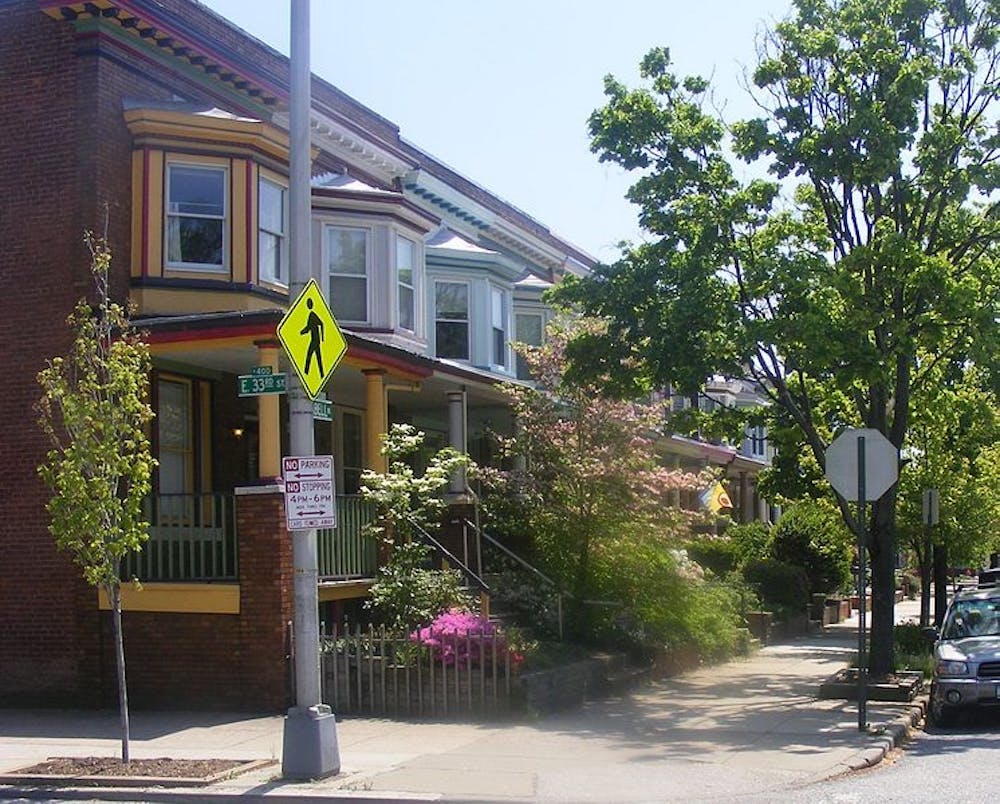Through one of my courses this past spring, I was lucky enough to meet Greg Butler, a Baltimore native and protagonist of Owned: A Tale of Two Americas, a documentary about U.S. housing and its prejudiced history.
Butler’s commute to Homewood Campus, where the movie screening was held, took only a couple of minutes, he told us. He began his post-movie talk by mentioning that he is from the 21218. With pride and a shadow of a smile, he added that he has the digits tattooed on his chest to prove it.
But he observed that truth be told, that evening was his very first on our campus grounds. The only time we might find him remotely close to Hopkins otherwise would be when Chipotle calls his name. “Other than that, I don’t feel like I belong,” I remember him saying, the hint of a smile wiped clean from his face.
The Hopkins environment is hostile, he concluded. His speech resonated darkly with us in the room, because these observations were coming from someone who lives just beyond Greenmount Avenue, less than a mile away from where we were sitting.
Butler’s words shed light on a problem that we on Homewood Campus have a hard time seeing. I would suggest that this blindness is at least partially a result of our somewhat misinformed understanding of Baltimore. What I mean to say is that, as undergraduates, most of us spend nearly all of our time close to Homewood Campus. I argue that this in turn leads us to develop a fractured comprehension of the city at large and its complex dynamics, leaving us blind.
This aside, the issue plaguing the Charles Village and Homewood regions, regardless of whether we are blind to it or not, still exists. The truth is that something about our environment is threatening to those who aren’t from it. After the movie screening, I found myself contemplating one question more than any other: What or who, exactly, in the Homewood Campus causes people of our neighboring communities to feel threatened or unwanted?
Since then, the answer to that question has materialized before my eyes. From signs outside of local businesses and Hopkins buildings that prohibit soliciting, targeting the homeless population of Charles Village, to the Milton S. Eisenhower (MSE) Library, where one must have an ID to enter, various expressions of hostility to community members are present everywhere.
However, what is potentially the most dangerous expression of animosity produced by our environment only became clear to me recently. To no surprise, it took a relationship I have with someone who isn’t of the Hopkins community to witness and understand it. I am referring to a man experiencing homelessness with whom I’ve grown closer in the last year and, in particular, to an incident wherein he was neglected not only by members of the Campus and Charles Village communities but also by Hopkins officials and employees.
I was on my way home from campus a few weeks ago when it happened. My friend was injured and lying on the sidewalk. He told me he had pulled something serious and couldn’t walk. We were three blocks away from MedStar Union Memorial Hospital, so I called the Hopkins Security Office.
“There’s an injured man here outside of Charles Street Market,” I said. “He needs help getting to the hospital.”
A long pause ensued. And then, “This man isn’t a Hopkins student, is he?”
I was tempted to lie, but I resisted the urge. “No, he isn’t,” I replied.
The security officer’s response: “I’m sorry. We can’t help in that case. You should call an ambulance.” With that, the security official hung up.
It is because of this kind of treatment that people from other parts of town, with different backgrounds and histories, don’t feel like they belong anywhere near Homewood Campus. The passive acts of animosity sting, but allowing an injured human to lie untreated on the street just because they aren’t a University affiliate is actively harmful.
What is Charles Village going to look like when Johns Hopkins Police Department (JHPD) officers are exclusively responsible for the area? Are passive acts of hostility going to make way for dangerous, actively antagonistic behavior, as was the case with my friend? Doesn’t the idea of a private police force itself produce a certain ethos of animosity?
Eventually, in exasperation, I decided I would try to support my friend, the injured homeless man, as he walked to the emergency room. It was slow and I could tell it was painful, but he made it. After I ensured that he was being taken care of, I started on my way home, passing three idling Hop Cop cars before I arrived.
As the University’s influence grows with the JHPD, I urge students, faculty and staff to recognize how our environment’s hostility might become even more pronounced than it already is. While the University’s aim might always be to make the area safer for everyone, I believe it is our obligation to investigate who it is really being made safer for and at what cost.
The Hopkins community prides itself on being integrated into a major American city, and yet there are many native Baltimoreans who spend their whole lives avoiding Homewood Campus. Is this a contradiction we are willing to stand behind?
Xandi Egginton is a sophomore majoring in Political Science and Anthropology from Baltimore.





